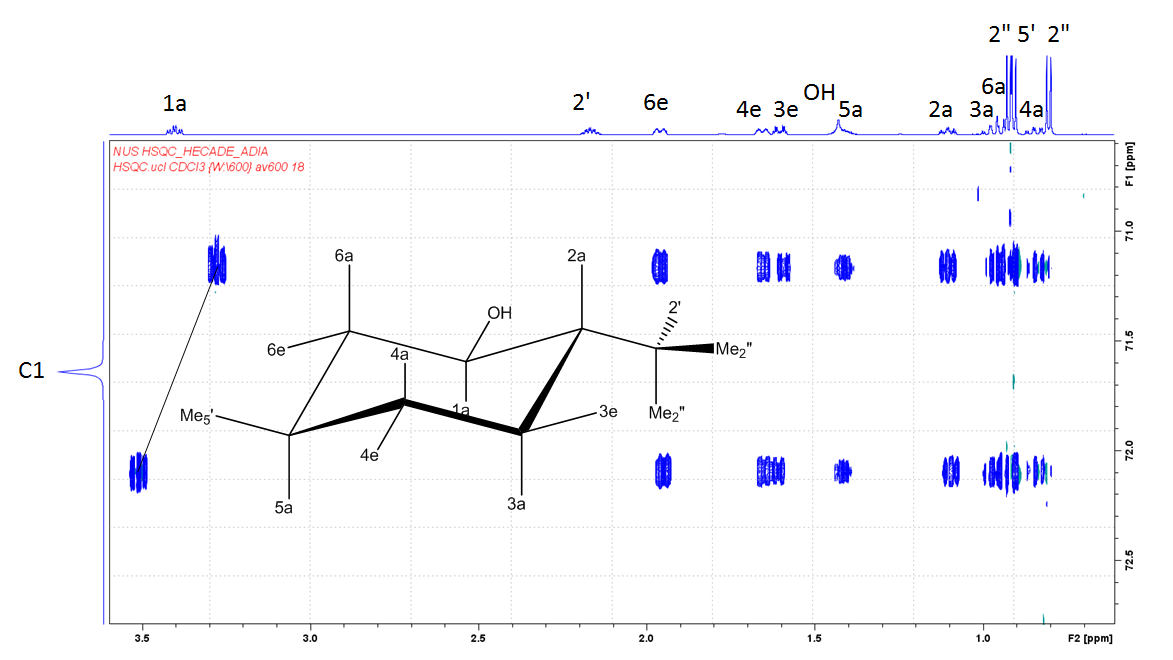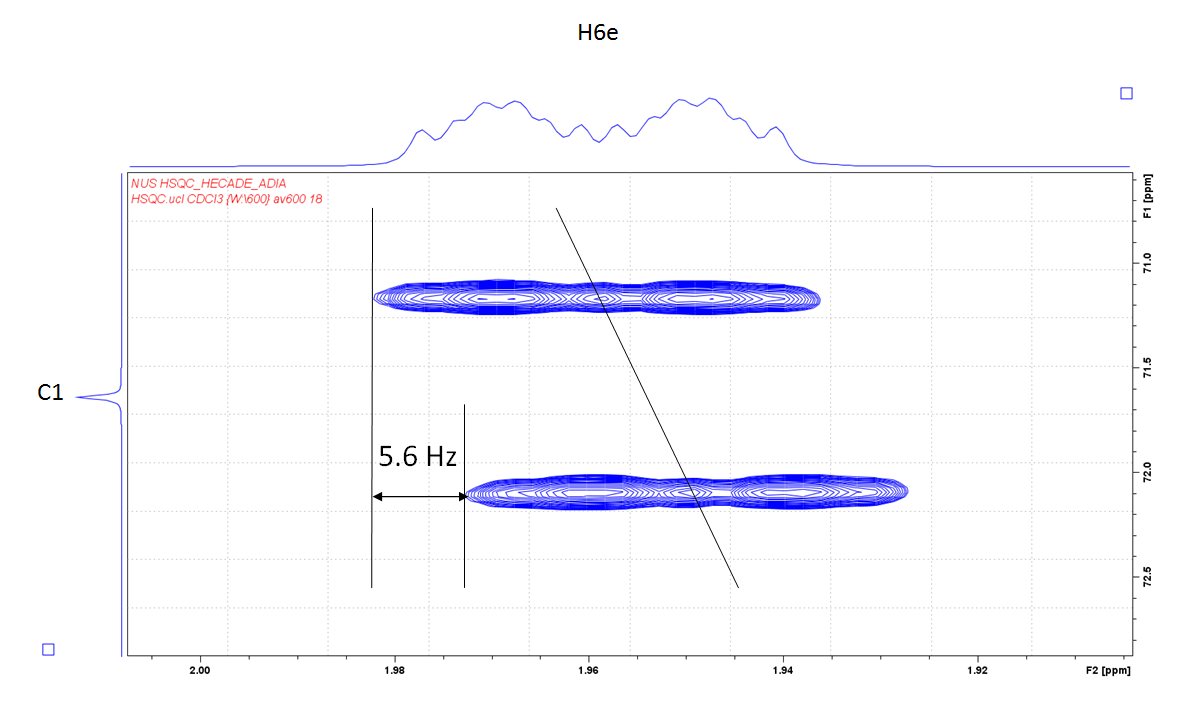It is well known that 13C-1H couplings over one and three bonds (1JCH and 3JCH)are positive while those over two or four bonds (2JCH or 4JCH) are either positive or negative. This has important implications for structure determinations of, for example, natural products, where no a priori assumptions can be made about atom connection pattern. Thus, if we know that the sign of nJCH is negative, then the number of bonds between C and H cannot be three and using the absolute value of the coupling constant we could make an educated guess on whether it corresponds to 2JCH or 4JCH.
NMR experiments sensitive to the sign of the J coupling are rather rare. The HSQC-HECADE experiment is unique in this regard as it allows to measure not only very small couplings, but also their sign. The latter is determined based on the tilt of the cross-peaks, reminiscent to a COSY45 experiment for JHH couplings. One-bond 13C-1H correlations are easy to spot due to their large value and when joined with a straight line the corresponding cross-peaks form a forward slash "/". This is illustrated here for 1H correlations of C1 in menthol:

Thus, all positive couplings will be tilted as "/", while negative couplings will form a backward slash "\". In order to determine the tilt for long range couplings, one has to zoom into each cross-peak:

From the observed backward tilt and the relative horizontal shift, we can determine that the coupling constant over two bonds between C1 and H6e is -5.6 Hz.
In the same manner we can measure couplings of C1 with other protons:
| 2" | 6e | 4e | 3e | 5a | 2a | 3a | 6a | 4a | |
| HSQC-HECADE | +2.7 | -5.6 | -0.6 | +10.1 | +2.1 | -6.1 | +2.3 | -6.1 | 0 |
| HMBC-JC | 2.6 | 5.5 | <1 | 10.1 | 1.9 | 6.1 | 2.3 | 6.3 | <1 |
Compared to HMBC-JC, the HSQC-HECADE experiment allows to determine not only the sign but also very small values of JCH couplings, such as 4J(C1,H4e)=-0.6 Hz.
 Close
Close

